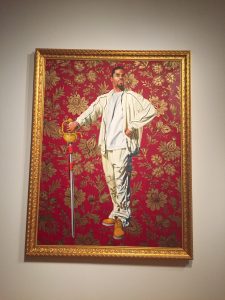
Willem van Heythuysen (2005) Kehinde Wiley. Seattle Art Museum.
I am a frequent visitor of museums. Anytime I travel with my family we always do two things in whatever city we visit: stop by the most prominent university, and go to an art gallery. Recently I went with my parents to Seattle specifically to see the art of Kehinde Wiley, a New York based painter who paints people of colour in positions like those depicted in the neoclassical style of the 18th and 19th century. My family has traveled to Los Angeles and New York on several occasions, so I have been lucky enough to see many of ‘the greats’, like Monet’s Water Lilies, Van Gogh’s The Starry Night, Picasso’s Les Demoiselle’s d’Avignon, and Matisse’s La Danse.
These works of art that I’ve seen are priceless; international treasures that are instantly recognizable. That is not what I found in UBC’s Rare Books and Special Collections.
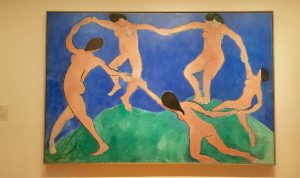
La Danse (1909) Henri Matisse. Museum of Modern Art.
Our ASTU 100 class examined and studied various documents relating to the novel Obasan by Japanese-Canadian author Joy Kogawa. The things we looked at would not be recognizable, you wold not see one recreated on a t-shirt. They were letters of rejection, newspaper articles, and fan letters. But what I was given was no less important than a Rothko.
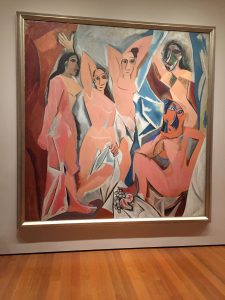
Les Demoiselles d’Avignon (1907) Pablo Picasso. Museum of Modern Art.
My partner and I were given a folder holding the contents of Kogawa’s brain. Early editions of the fictional Naomi Nakane’s family tree, an outline of Obasan’s plot, and alternate titles for the novel. On these pieces of paper, it is almost impossible to see where Joy ends and Naomi starts. We found a list of memories from “the house in Vancouver”. We couldn’t be sure whose memories these were. ‘My young mother, christmas presents, hot bath, playing dirty with kids, Old Man Howard’. These could be anyone’s memories.
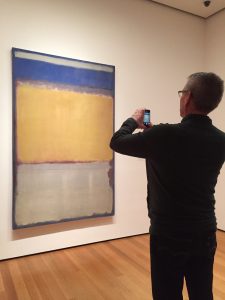
Dad with his favourite painter. No. 10 (1950) Mark Rothko. Museum of Modern Art.
I was surprised by how much freedom my class was given with these documents. Like the paintings I had seen at the MoMA, these were priceless, one of a kind, not to be recreated. The class was nervous at first, not wanting to rip any pages or smudge any words. It reminded me of a time in Palm Springs, when my family discovered an inconspicuous art gallery, with a name I can’t even remember. In the courtyard of the gallery was a sculpture by Henry Moore. My father, a lover of modern art, was so overcome with awe that he touched the statue without even realizing it. It could have cost millions. Some of the things were the product of a brain storm, Kogagwa’s stream of consciousness onto a page: “If we refuse to be eaten and eat do we die, or live. Surely the challenge is to discover that we can be eaten and not be destroyed – that love and resurrection attends our death – isn’t that where hope lies?” These words will not be endlessly studied by scholars. They will only be seen by so few people, and I am one of them. No one has analyzed them and decided what they mean. They can mean anything.

A family tree and character outlines. UBC Rare Books and Special Collections.
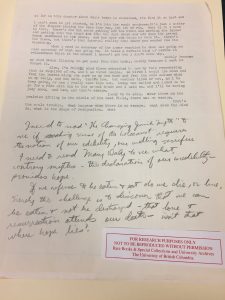
Joy Kogawa’s brainstorm. UBC Rare Books and Special Collections.
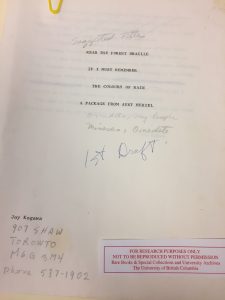
Alternate titles for Obasan. UBC Rare Books and Special Collections.